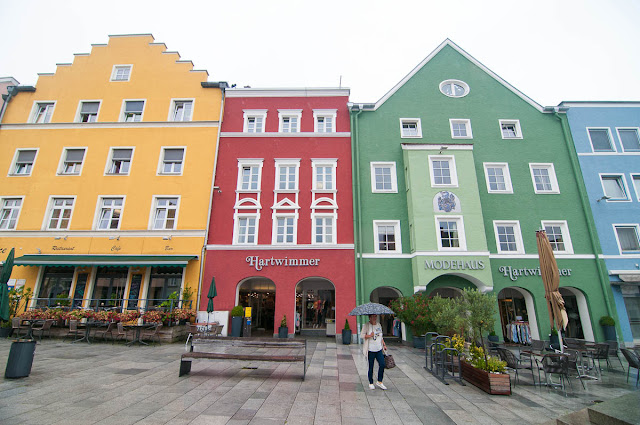U.S.A. New York City - Art and Automobiles
There are a few places in New York that are a must-see for us. The Met is one of them, but more on that shortly. First things first! Automobiles!
Many of you who know me well know that I have a bit of an obsession with cars. So it was a special treat to be able to visit the New York Auto Show. (Thank you Pablo for taking us!) It was amazing to see some of the machinery that I had only previously ever seen on the pages of magazines. And so now I will force on you some of the amazing machines that we enjoyed.
Let's start off with the Koenigsegg Regera above. In 1994, Christian Koenigsegg started off a car company, and it took 8 years to produce their first car. But when it was finally released, it was worth the wait. Initially, he only made 6 of them. But he has since worked hard on ramping up production. Currently 80 Regeras have been made. Even if you had the $1,900,000 you need to buy one, you can't because they are all sold out. But say you got on the list and did buy one, you would need to find a road where you would be allowed to drive it. It's top speed is 410km/h (255mp/h).
It always blows my mind how big 'pick-ups' in the States are. They routinely have 5 or 6 liter engines. Somehow I quite like them.
There was a section at the back that didn't have too many people but held the true gems of the show. This is a Bugatti type 57, built between 1934 and 1940. Its top speed is 157km/h (95mp/h), which quite frankly was ridiculous for the time. It's hard to know its current worth but definitely it's in the millions of dollars. Below is its modern day descendant, a Bugatti 16 cylinder, 8 liter (more than the truck!), 1,450hp beast. Notice how the designers incorporated the grille shape from the old car?

The car below is the legendary Lamborghini Miura. Before the Miura, all sports cars were racing cars. Which meant that they broke down all the time and were exceedingly uncomfortable. The Miura was revolutionary in more ways than one. Its engine was built between the axles instead of at the front. (Since then, all serious sports cars follow this pattern, with Corvette being the last one to fall in line in....2019). But perhaps more importantly, it was the first sports car that was made to look pretty. However, Ferruci Lamborghini did not approve but his engineers designed it secretly.
Speaking of Lamborghini, in 1988 a former Lamborghini employee left to form his own company. His name was Horacio Pagani. By 1999 he had come up with his first car - the Pagani Zonda. After a production run of 140 cars over 10 years, he released the Pagani Huayra, which you see below. Pagani loved Leonardo da Vinci and tried to include art in every feature of the car's design. The gear lever, the speedo, and even that side view mirror has that little bit of whimsical, beautiful design.
What made this trip especially fun was visiting the Met with some Smiths and Clarkes. Thanks for coming, it was such a lovely highlight of our stay.

Most of the family had enrolled ahead of time for the 'woman and the offspring' tour, except for the rebels: Sandi, Auntie Cindy (who knew she was such a rebel?) and I. Instead we wandered around looking at art. And boy does the Met deliver. It has 2 million pieces of art in its permanent collection, including paintings, sculpture, architecture, musical instruments, weapons, and textiles. It even has entire rooms transplanted from different times and places. It's tremendous. Even the spaces that hold the art, are works of art in themselves.
It's easy to get overwhelmed, so we have developed this approach: Sandi and I often have a favorite piece or 2 that we want to see. Apart from those, the other rule is, don't try to see everything. Chose one area of interest, and ignore everything else. When we are tired, we sit and rest. This time we even popped out for lunch.
The ancient near east section is a must-see because it contains so much Bible history. The beasts (pictured at the beginning of this post) are lamassu from the palace in Nimrod, of King Ashurnasirpal II. He mentions King Jehu in some of the inscriptions found in this palace.
This was his 'acceptance painting' into the institute whatever that means!
The closer you look at the painting, the more details you see. My pics don't really do it justice. Incidentally, this painting depicts the victory of Roman consul Aemilius Paulus over the Greeks in Phillippi in 168 BCE (see Acts 16:12 - study note in the NWT).
One last cool story about Vernet. At the age of 78, just days before he died, he was spotted racing horses. Definitely an interesting man.
My movie star relatives: It was great to meet you Meg!
My fun relatives: good times with Auntie Jeni.






















